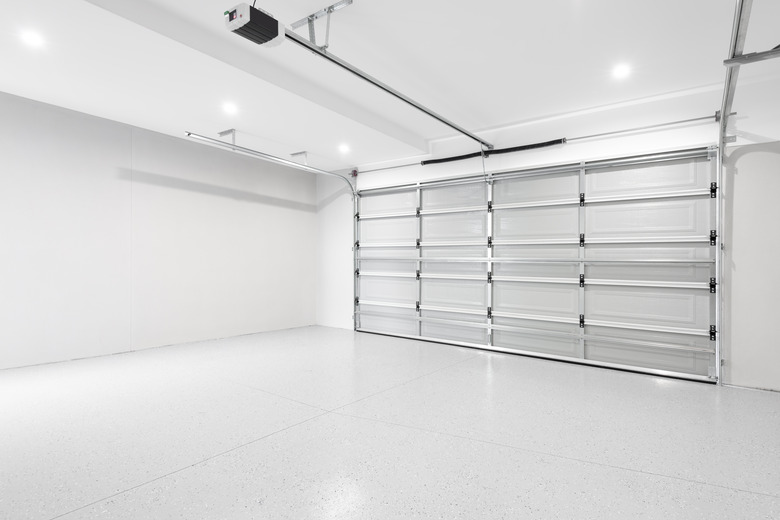Garage Door Clearance Requirements
Garage doors can open sideways like barn doors, but most open vertically and slide horizontally along the ceiling. This arrangement requires space between the horizontal track and the ceiling, which is known as headroom, to give the door panels space to tilt from a vertical to horizontal position as the door opens.
The garage must also have a minimum depth to accommodate the door, and there must also be space on either side of the door for the door tracks, the extension springs, and the ends of the torsion spring if there is one. Sideroom and depth clearances are based on the size and type of the door, and the headroom clearance can be reduced if necessary by installing low headroom tracks.
Headroom Clearance for a Standard Garage
Headroom Clearance for a Standard Garage
The standard headroom clearance for a garage door depends to an extent on the type of door it is and whether it uses torsion springs, but it has to be at least 10 inches, and for some doors, it's 12 inches or as much as 18 inches for some high-lift doors. This distance is measured from the top of the door opening to the ceiling.
If you're installing a garage door that fits inside a 7-foot-high frame, this means that the minimum ceiling height for a 7-foot garage door without torsion springs would be 7 feet, 10 inches. Doors with torsion springs need a little more headroom than those without because the spring brackets take up extra space. The minimum headroom for a garage door with torsion springs is 12 inches, making 8 feet the minimum ceiling height for a 7-foot garage door.
The headroom must be unobstructed for the entire length of the door track. No ducts, wires, lights, or storage areas can be placed there.
Low Headroom Clearances
Low Headroom Clearances
If your garage doesn't meet the standard headroom requirements, you can install a low headroom garage door track system. It employs double tracks that reduce the space needed for the door panels to tilt before siding vertically along the ceiling. In this type of system, the torsion bar may be placed at the back of the track rather than above the door opening to save space.
The general garage door clearance requirement for a low headroom door with the torsion bar placed over the door opening is 9 1/2 inches. If you locate the torsion bar at the end of the track, you can reduce this requirement to 5 inches. If the door uses extension springs instead of torsion springs, the clearance for a low headroom track system is only 4 1/2 inches.
Sideroom and Depth Clearances
Sideroom and Depth Clearances
The sideroom clearance you need depends on the size of the door tracks and whether or not the door has extension springs. In general, the minimum sideroom clearance is 3 3/4 inches, but some doors with wide tracks need 5 1/2 inches, and some low headroom doors need 6 1/2 inches. The sideroom requirements are specified in the door's installation manual.
Depth clearance depends on the height of the door and is usually the height of the door plus 18 inches. This distance is measured from the top of the door to the rear wall of the garage. This clearance allows room for a door opener and other garage door parts that may be needed.
